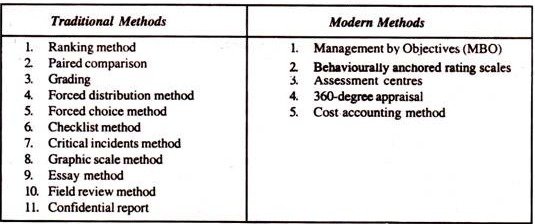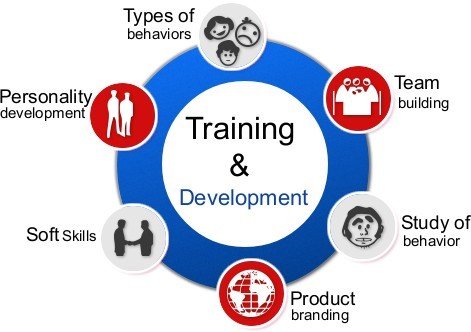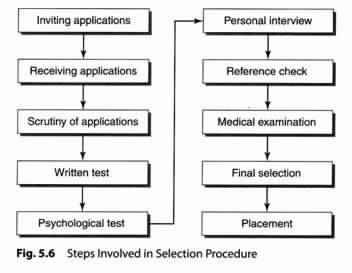Performance Appraisal of managers is a systematic evaluation of a manager’s effectiveness in achieving organizational goals, leading teams, and fulfilling their responsibilities. It assesses various dimensions such as leadership, decision-making, communication skills, goal achievement, and team management. The process involves setting performance standards, measuring actual performance, providing feedback, and identifying areas for improvement. Appraisals are crucial for recognizing contributions, aligning individual performance with organizational objectives, and fostering professional development. They also aid in making informed decisions about promotions, rewards, and training needs, ensuring that managers remain motivated and equipped to handle evolving business challenges effectively.
Objectives of Performance Appraisal:
The primary objective is to evaluate an employee’s performance against predefined standards. This assessment identifies strengths, weaknesses, and areas needing improvement, enabling managers to make informed decisions about an employee’s future roles and responsibilities.
Performance appraisals aim to provide constructive feedback to employees about their work. Regular and transparent feedback fosters a culture of openness and continuous improvement, helping employees understand how their efforts contribute to organizational success.
Through performance appraisals, organizations can identify employees’ training and development needs. This helps in designing customized learning programs and career advancement opportunities, ensuring employees grow in their roles and contribute effectively to the organization.
Performance appraisals provide a solid basis for making various HR decisions such as promotions, transfers, terminations, and compensation adjustments. They ensure that such decisions are fair, objective, and aligned with organizational goals.
Appraisals help managers and employees collaboratively set realistic and measurable goals for the future. These goals guide employees in prioritizing tasks and focusing on key performance areas that align with organizational objectives.
Recognizing and rewarding employees for their performance boosts morale and motivates them to perform better. It also creates a healthy competitive environment, encouraging all employees to strive for excellence.
Performance appraisals help in identifying employees with leadership capabilities and managerial skills. This is essential for succession planning, ensuring the organization is prepared for future leadership needs.
By assessing and aligning individual performance with organizational objectives, appraisals ensure that employees’ efforts contribute to the larger vision and mission of the company. This alignment fosters a sense of purpose and commitment among employees.
Purpose of Performance Appraisal:
One of the primary purposes of performance appraisal is to help identify an employee’s strengths and weaknesses. It provides valuable feedback to employees, which aids in their professional development. By addressing areas where improvement is needed, employees can focus on skill development, enhancing their capabilities, and becoming more effective in their roles.
Performance appraisals offer an opportunity for managers to provide employees with constructive feedback regarding their work performance. This feedback highlights what employees are doing well and areas where they can improve. Regular feedback fosters transparency, helping employees understand their contributions and adjust behaviors accordingly.
Performance appraisals are often linked with goal-setting processes. During the appraisal, employees can discuss their past goals and set new targets for the future. These goals help align individual performance with the broader objectives of the organization, ensuring that everyone works toward common goals and enhances overall performance.
Performance appraisals play a vital role in determining rewards, promotions, and salary increments. By evaluating employees based on their performance, organizations can ensure that high-performing individuals are appropriately recognized and rewarded. This motivates employees to perform better and fosters a culture of meritocracy within the workplace.
Performance appraisals help identify potential future leaders within an organization. They provide insights into employees’ readiness for higher roles and responsibilities. By understanding an employee’s strengths and career aspirations, HR managers can offer tailored career development opportunities, including training, mentorship, or job rotations, to prepare employees for future roles.
By assessing the performance of employees across various departments, performance appraisals help organizations make informed decisions about staffing needs, resource allocation, and succession planning. They provide a comprehensive view of workforce capabilities, helping organizations plan for the future and address any gaps in skills or talent.
A well-conducted performance appraisal system boosts employee morale by recognizing hard work and achievement. When employees see that their efforts are acknowledged, they feel valued and are more motivated to perform at higher levels. Positive feedback during appraisals also strengthens employee engagement and loyalty to the organization.
Advantages of Performance Appraisal:
Performance appraisals help employees understand their strengths and weaknesses through constructive feedback. By identifying specific areas for improvement, employees can focus on enhancing their skills and productivity, ultimately contributing to the organization’s success.
Through appraisals, organizations can pinpoint skill gaps and training requirements among employees. This enables the design of targeted training programs to address these gaps, ensuring employees are better equipped to meet job demands and adapt to evolving organizational needs.
Appraisals provide a clear and objective basis for making decisions regarding promotions and career advancements. They help identify high-performing employees who deserve recognition, rewards, or leadership opportunities, fostering a meritocratic work environment.
Recognizing and rewarding employees for their hard work during appraisals boosts morale and motivation. Positive reinforcement encourages employees to maintain or improve their performance, creating a culture of continuous excellence within the organization.
Performance appraisals foster open communication between employees and management. Regular discussions during appraisals provide a platform for employees to share concerns, seek guidance, and align expectations, leading to better understanding and collaboration.
Performance appraisals provide valuable data for strategic HR decisions, such as workforce planning, promotions, transfers, and terminations. This ensures that organizational decisions are fair, data-driven, and aligned with long-term goals.
Appraisals align employee efforts with organizational goals by setting clear expectations and performance standards. This alignment ensures that individual contributions support the larger mission and vision of the company, driving overall success.
Limitations of Performance Appraisal:
Performance appraisals are often influenced by the evaluator’s personal biases or preferences. Subjective judgments can result in inaccurate assessments, where personal relationships, favoritism, or preconceived notions overshadow objective performance evaluation.
The “halo effect” occurs when a single positive trait influences the overall appraisal, while the “horn effect” occurs when a single negative trait dominates the evaluation. These biases can distort the true performance picture and lead to unfair appraisals.
Inconsistent appraisal methods and criteria across departments or evaluators can lead to discrepancies in evaluations. Without a standardized process, comparisons between employees become unreliable, and fairness in assessments is compromised.
Poorly conducted appraisals can lead to dissatisfaction and demotivation among employees. If feedback is overly critical, vague, or fails to recognize genuine contributions, employees may feel undervalued and lose motivation to perform.
Employees may resist or react negatively to critical feedback, viewing it as an attack rather than an opportunity for improvement. This resistance can hinder constructive dialogue and reduce the effectiveness of the appraisal process.
Performance appraisals require significant time and resources for planning, implementation, and follow-up. For large organizations, conducting regular and detailed appraisals for all employees can be a complex and expensive process, leading to inefficiencies.
Appraisals often emphasize past performance rather than future potential. This retrospective approach may overlook an employee’s ability to grow, adapt, or contribute in new roles, limiting the organization’s ability to identify and nurture potential talent.
Process of Performance Appraisal:
The first step is to define clear, measurable, and achievable performance standards based on organizational objectives. These standards serve as benchmarks for evaluating employee performance and should be communicated clearly to employees to avoid ambiguity.
It is essential to ensure that employees understand the performance standards and expectations. This step involves regular communication between managers and employees to clarify roles, responsibilities, and key performance indicators (KPIs).
In this step, employee performance is tracked and documented over a specific period using various tools such as reports, observation, and self-assessments. This data collection should be objective and based on facts rather than subjective opinions.
Once the data is collected, the actual performance is compared to the predefined standards. This comparison identifies gaps, strengths, and areas for improvement, providing a comprehensive view of an employee’s performance.
Feedback is a critical step in the appraisal process. Managers share their observations and evaluations with employees through one-on-one discussions. Constructive feedback highlights both achievements and areas for improvement, fostering a culture of learning and development.
Based on the appraisal results, managers identify specific training and development requirements for employees. Addressing these needs helps improve skills and prepares employees for future responsibilities and roles.
Appraisals provide the foundation for making key HR decisions such as promotions, rewards, salary adjustments, transfers, or terminations. The appraisal outcomes ensure that these decisions are fair, transparent, and aligned with organizational goals.
The final step involves monitoring progress and ensuring that employees work on the feedback provided. Regular follow-ups help maintain accountability and track improvements, fostering continuous growth and alignment with organizational standards.
Uses of Performance Appraisal:
Performance appraisal helps in identifying an employee’s strengths and areas for improvement. Based on feedback, employees can work on enhancing their skills and competencies through training or mentoring. It also encourages self-reflection and goal setting, helping individuals align their efforts with organizational expectations. Appraisals act as a developmental tool by enabling employees to track their progress over time and stay motivated to improve. When conducted properly, they foster a learning culture that boosts both personal and professional growth, ensuring long-term development and better performance outcomes.
Organizations use performance appraisals to make informed decisions regarding salary increases, bonuses, and other financial rewards. High-performing employees are often recognized and rewarded accordingly, which helps in maintaining motivation and performance levels. It ensures that compensation is distributed fairly based on merit and contribution rather than favoritism. Linking pay to performance reinforces the idea that efforts and achievements are valued. This also supports the organization’s compensation strategy by aligning rewards with employee productivity and organizational goals, promoting a culture of accountability and excellence.
Appraisals provide valuable insights into an employee’s readiness for advancement or role changes. Managers assess competencies such as leadership, problem-solving, and teamwork to determine suitability for higher positions. Performance data helps in succession planning and internal talent identification. Employees who consistently perform well may be fast-tracked for promotions, while those needing improvement are guided through development plans. This ensures that promotions are fair, strategic, and based on evidence. Career planning becomes more effective when based on documented achievements and progress, helping both individuals and organizations prepare for future challenges.
Appraisals highlight specific skill gaps or knowledge deficiencies among employees, which organizations can address through targeted training programs. For instance, if a team shows weak customer service skills, a training module can be introduced to improve communication. This focused approach ensures that resources are used effectively and training is relevant to current needs. Managers and HR professionals can use appraisal data to tailor development plans that support employee growth. Addressing these gaps enhances overall productivity, minimizes errors, and strengthens organizational capability, thereby fostering a more competent and confident workforce.
Performance appraisals create structured opportunities for open dialogue between employees and supervisors. Through feedback, employees understand how their work aligns with expectations, what they’re doing well, and where they need improvement. This communication fosters trust, reduces ambiguity, and ensures alignment of individual efforts with team and organizational goals. Constructive feedback motivates employees and strengthens the manager-employee relationship. It also allows managers to express appreciation or concerns in a professional manner. Regular, honest feedback ensures that employees remain engaged, responsible, and continuously improve their work performance.
Appraisal records serve as formal documentation of employee performance, which can be critical when making disciplinary or termination decisions. If an employee is consistently underperforming, appraisal results can support managerial actions such as issuing warnings, restructuring roles, or initiating exit processes. This ensures objectivity and legal compliance, as decisions are based on documented evidence rather than subjective judgment. It also protects the organization from potential disputes. Thus, appraisals act as a safeguard to maintain workforce quality and reinforce accountability across all levels of employment.
Performance appraisal data supports workforce planning by providing insights into overall employee productivity, skill levels, and future potential. Organizations can use this information to anticipate talent shortages, redesign roles, and manage succession. It also helps in aligning individual capabilities with future organizational needs. Appraisal data allows leadership to make strategic decisions regarding restructuring, manpower allocation, or expansion. This macro-level use of performance evaluations ensures that the organization has the right people in the right roles at the right time, ultimately leading to improved effectiveness and sustainable growth.
Like this:
Like Loading...


